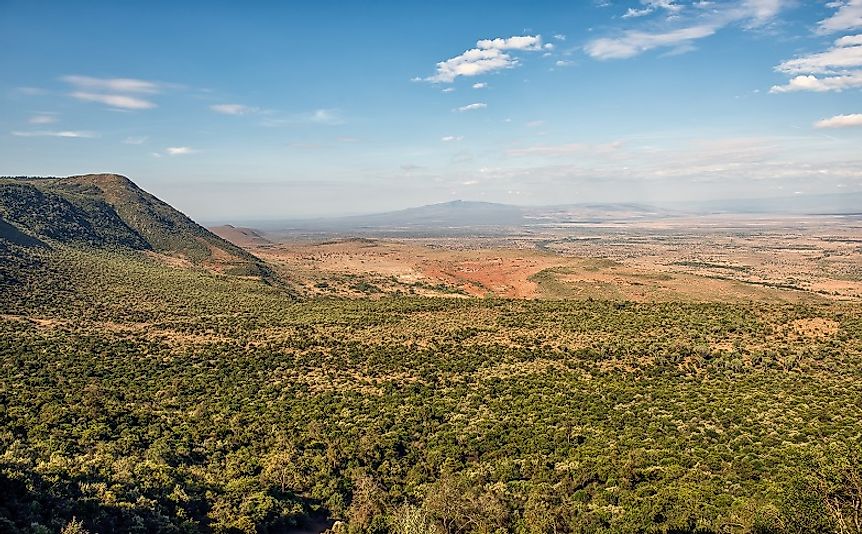Eastern Rift Valley (Gregory Rift) - Geography of Africa

5. Geology and Topography
The Gregory Rift Valley covers large expanses of highland areas in Eastern Africa. The East African Rift is considered as one of the geological wonders of the modern world. A rift in simple terms is a fracture on the surface of the earth that over time can widen. This particular eastern rift is being split apart by tectonic forces and as a result, new plates are being created. The rift valley has two branches. Namely, these are the Western Branch and the Eastern Branch. The eastern part is marked by much volcanic activities producing basalt eruptions and crevice formations. The western part is comprised of Lakes Tanganyika and Malawi. These activities represent a developing rift system that is unique in the world today.
4. Historical Role
The East African Rift Valley is an important component to understanding the beginnings of human development. Many fossils such as hominids and related finds have pointed to the evolution of man in walking upright and developing a bigger brain suitable to his environment. The geology and topography of the rift valley may also have contributed to today's alternating weather patterns. As its volcanic and geological development continues, scientists are treated to a once-in-a-lifetime show of sorts as a one-of-a-kind geological wonder. Although today the alignment of the eastern valley rift is North-South, it was oriented to the East-West in the past, with that change occurring in the last half million years.
3. Modern Significance
The Gregory Eastern Rift Valley was named after John Walter Gregory, a British geologist who studied the region from 1892 through 1893 and then again in 1919. He also coined the term, “rift valley.” Although the first geologist to detect the great fault was Joseph Thomson in 1879 to 1880 and again in 1883, when he explored the rift valley in Kenya. The year 1913 saw Hans Reck, a German geologist collect mammalian fossils after studying the Olduvai Gorge. The anthropologist George Leakey discovered hominid remains in 1930 after exploring the same area. Scientists today are studying the region for its active geological development that provides data on how continents divide and separate into smaller parts.
2. Habitat and Biodiversity
The East African Rift valley has produced fractures that has filled up with water over time that turned into major lakes namely: Lakes Tanganyika and Malawi. Several smaller lakes have also been created by this geological rift. The lakes region has attracted a varied avian population that includes migratory birds and resident flamingos that number in the millions. The two major lakes themselves are home to an enormous speciation of cichlid fish that have evolved over time exclusively endemic and indigenous to each lake. The two major lakes have very high pH levels (making them alkaline) in their waters, and support their own sardine populations. The smaller lakes have caustic waters while some are salt lakes filled with brine shrimp. Native avian fauna includes the purple heron and the African Fish Eagle.
1. Environmental Threats and Territorial Disputes
Economic activities and surge in large human populations has threatened the East Rift Valley lakes. Unsustainable fishing and human pollution such as wastes being thrown into the lakes are just two of the threats that could greatly affect the survival of the native species. As the two major lakes; Lakes Tanganyika and Malawi are shared by several African countries, it is important that these countries share the responsibilities of these concerns toward the conservation and protection of the lakes. It is an important task as together the two lakes with Lake Victoria holds a quarter of the planet's freshwater. Interlinked human activities also affect the rivers and wetlands of East Africa. It is therefore crucial that working policies be implemented in the conservation of the region's natural resources.











